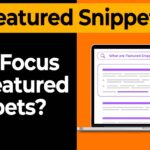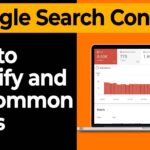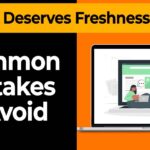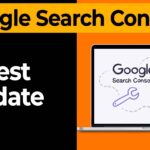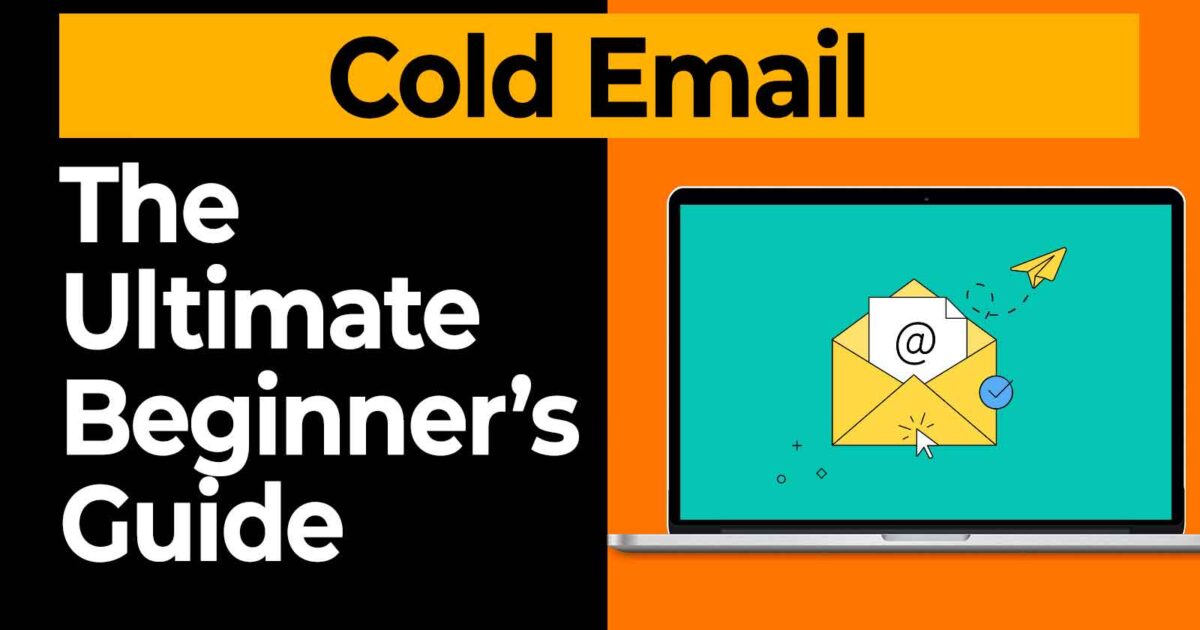
Curious about cold emails and how they work? Or maybe you’ve heard the term but aren’t sure how to use this strategy effectively. Either way, you’re in the right place.
Cold emailing is a powerful, scalable, and cost-effective way to connect with potential clients, build relationships, and grow your business. In this guide, we’ll explore what cold email is, how it differs from spam, and how to craft effective campaigns that deliver results.
Table of Contents
What Is a Cold Email?
A cold email is a message sent to someone you have never contacted or interacted with before. Unlike spam, which is irrelevant and mass-sent, cold emails are carefully targeted and personalized for a specific business purpose. Whether it’s reaching out to a potential client, networking with an industry peer, or pitching an idea to an investor, cold emails serve as an introduction that can open doors.
Key Features of Cold Emails:
- Personalized: Tailored to the recipient’s needs or interests.
- Purposeful: Aimed at starting a conversation or building a connection.
- Professional: Includes clear contact details and respects legal guidelines.
For instance, a cold email might:
- Propose a demo to a decision-maker in your target market.
- Start a conversation with an industry expert.
- Contact a recruiter about a job opportunity.
What makes a cold email “cold” is the absence of a prior relationship. That’s why crafting a compelling message is essential.
Why Choose Cold Email Marketing?
Cold email marketing involves using emails to contact prospects, instead of relying on methods such as cold calling or social media outreach. It’s preferred by many because it’s:
- Scalable: Easily send hundreds of targeted messages at once.
- Cost-Effective: Avoid high advertising costs.
- Non-Intrusive: Recipients can read and respond at their convenience.
- Trackable: Monitor metrics like open rates and replies to optimize your campaign.
Done right, cold emailing can deliver exceptional ROI by helping you reach the right audience with the right message at the right time.
Is Cold Email the Same as Spam?
No. While both are unsolicited emails, there are critical differences:
| Cold Email | Spam |
| Targeted and personalized | Mass-sent and generic |
| Includes clear sender details | Often uses fake information |
| Aims to build relationships | Pushes irrelevant offers |
To ensure your emails aren’t flagged as spam:
- Use a professional email address.
- Avoid misleading subject lines.
- Provide a clear, easy-to-follow call-to-action.
- Respect laws like the CAN-SPAM Act by including an opt-out option.
Benefits of Cold Emailing
Here’s why cold emails are a go-to strategy for businesses:
- Target Specific Prospects: Focus on individuals or businesses that align with your goals.
- Cost-Effective: Reach potential clients without expensive ads or resources.
- Scalable: Contact a large audience with minimal effort.
- High ROI: Optimize campaigns based on data for better results.
- Relationship Building: Lay the groundwork for future opportunities.
Use Cases for Cold Email
1. Lead Generation
Cold emails can help you identify and engage potential customers. For example, a B2B software company might email decision-makers to introduce their product and set up a meeting.
2. Business Partnerships
Propose collaborations with complementary businesses. For instance, a marketing agency could reach out to influencers for joint projects.
3. Networking
Broaden your professional network by building connections with industry experts. Send personalized emails highlighting mutual interests or goals.
4. Link Building
Boost your SEO by requesting backlinks. Reach out to website owners and explain how your content can add value to their readers.
5. Recruitment
Find top talent by contacting professionals directly. Tailor your message to highlight how their skills align with your job opening.
How to Write an Effective Cold Email
1. Catchy Subject Line
Keep it short, specific, and engaging.
2. Personalized Introduction
Start by addressing the recipient by name and mentioning something relevant about them or their business.
3. Clear Purpose
Explain why you’re reaching out and how it benefits them.
4. Compelling Call-to-Action (CTA)
End with a simple, actionable request.
5. Professional Signature
Include your full name, position, company, and contact information.
Pro Tips for Successful Cold Email Campaigns
- Test and Optimize: Experiment with different subject lines, messaging styles, and CTAs to see what works best.
- Timing Matters: Send emails during business hours for higher response rates.
- Track Performance: Use tools to monitor open rates, click-throughs, and replies.
- Maintain Clean Lists: Regularly update and validate your contact list to avoid bounce rates.
Cold Email Outreach: A Step-by-Step Guide
Cold email outreach is an effective method to reach potential clients or businesses by sending personalized emails to attract their interest in your product or service. When done correctly, it can generate leads, build brand awareness, and even convert prospects into loyal customers. This guide provides a comprehensive approach to creating impactful cold email campaigns.
What is Cold Email Outreach?
Cold email outreach involves sending unsolicited yet targeted emails to individuals or companies. The goal is to establish a connection and introduce your offerings. Unlike spam emails, cold outreach focuses on crafting personalized and value-driven messages that resonate with recipients.
Benefits of Cold Email Outreach
- Lead Generation: Identify and engage potential customers.
- Brand Awareness: Increase recognition of your business.
- Conversion: Turn prospects into paying customers by offering tailored solutions.
How to Execute Cold Email Outreach Effectively
Follow these six steps to ensure your cold email outreach yields the best results:
Step 1: Define Your Target Audience
Understanding your target audience is critical. Begin by researching their needs, preferences, and challenges. Use this information to create an Ideal Customer Profile (ICP), which should include:
- Industry
- Company size
- Revenue range
- Location
- Job titles
- Pain points
An ICP helps you identify prospects who are most likely to benefit from your offerings.
Step 2: Build a High-Quality Lead List
Create a list of potential customers that align with your ICP. You can build this list using various methods:
- Manual Research: Visit websites, LinkedIn, or forums to find contacts.
- Email Scraping Tools: Use tools like Hunter.io or Apollo.io to gather contact information.
- Third-Party Databases: Purchase lists from reliable sources, ensuring they comply with data regulations.
- Trigger-Based Approach: Target leads based on events like new funding, leadership changes, or product launches.
Always verify your list to ensure accuracy and avoid email bounces.
Step 3: Optimize for Email Deliverability
Email deliverability ensures your messages land in inboxes rather than spam folders. Key steps include:
- Use a Secondary Domain: Avoid using your primary domain to protect its reputation.
- Warm Up Your Domain: Gradually increase email volume to build credibility.
- Authenticate Emails: Set up SPF, DKIM, and DMARC records to verify your sender identity.
- Custom Tracking Domain: Track opens and clicks without harming your sender reputation.
Step 4: Craft Compelling Emails
A well-written email captures attention and drives action. Key elements include:
- Subject Line: Keep it short, personalized, and relevant.
- Preheader Text: Summarize your email in one line to entice readers.
- Body:
- Start with a personalized greeting.
- Introduce yourself and explain the purpose of your email.
- Highlight the benefits of your product/service.
- Include social proof, such as testimonials or case studies.
- End with a clear call-to-action (CTA).
Step 5: Monitor and Analyze Performance
Track key metrics to evaluate your campaign’s success:
- Deliverability Rate: Ensure your emails reach inboxes.
- Open Rate: Aim for a rate above 39% for effective campaigns.
- Click-Through Rate (CTR): Measure how many recipients engage with your CTA.
- Response Rate: Analyze the number of replies you receive.
Use these insights to tweak your strategy and improve future campaigns.
Step 6: Follow Up Consistently
Following up is essential to nurture relationships. Space out your emails and ensure each follow-up adds value or addresses a pain point. Avoid being overly pushy while keeping the conversation professional.
Best Practices for Cold Email Outreach
- Personalize every email to make it relevant to the recipient.
- Keep your tone conversational yet professional.
- Avoid spammy language like “Free” or “Limited Time Offer.”
- Focus on building relationships rather than making immediate sales.
- Test different email templates to determine what works best.
Cold email outreach can be a game-changer for your business when executed strategically. By understanding your audience, crafting personalized messages, and consistently analyzing performance, you can build lasting connections and drive meaningful results. Start applying these strategies today and unlock the full potential of cold email outreach.
Choosing the Best Cold Email Platform for Your Needs
When diving into email marketing, the choice of a cold email platform can make or break your outreach success. The ideal platform should:
- Accelerate your workflow without introducing unnecessary complexity.
- Maximize email deliverability to ensure your messages reach the inbox.
- Offer essential features like scheduling, follow-ups, and analytics.
- Clearly define limits and caps to avoid unexpected disruptions to your campaigns.
Here is a detailed look at the top contenders in the cold email space, to help you find the perfect match for your business.
1. HubSpot
Overview: HubSpot provides a comprehensive suite integrating sales, marketing, customer service, and content management. While it’s a sophisticated tool for general outreach, it’s not built specifically for cold email campaigns.
Key Features:
- Advanced CRM integrations.
- Powerful automation workflows.
Considerations:
- Limited cold email focus.
- Complex system with a steep learning curve.
2. Woodpecker
Overview: Woodpecker combines a cold email tool, sales automation, and agency management features. It operates on a pay-per-contact model, sending emails from a standalone inbox.
Key Features:
- Follow-up automation.
- Email personalization at scale.
Considerations:
- Standard features like A/B testing require additional payments.
- Limited API integrations.
3. Mailchimp
Overview: Mailchimp is a widely recognized email marketing platform, often used by beginners. While excellent for general email marketing, it lacks cold email-specific features.
Key Features:
- Easy-to-use interface.
- Extensive template library.
Considerations:
- Not designed for cold email campaigns.
- Limited scalability for cold outreach.
4. Mailshake
Overview: Mailshake focuses on enterprise users and offers a structured onboarding process, including a mandatory 30-minute demo.
Key Features:
- Comprehensive email setup wizard.
- Detailed analytics for campaigns.
Considerations:
- Capped at 5,000 to 10,000 recipients per campaign.
- No free trial available.
5. MailRush
Overview: MailRush leverages its own servers to send emails, which can sometimes impact deliverability.
Key Features:
- Email validation tools.
- Customizable sending caps.
Considerations:
- Monthly and daily email limits.
- Limited scalability for high-volume campaigns.
6. ActiveCampaign
Overview: ActiveCampaign combines CRM functionalities with email marketing, making it suitable for businesses managing complex customer journeys.
Key Features:
- Robust automation tools.
- Seamless CRM integration.
Considerations:
- Not designed specifically for cold email.
- Requires a higher learning curve.
7. Amazon SES
Overview: Amazon Simple Email Service (SES) is a highly scalable option tailored for developers who require advanced IP and authentication control.
Key Features:
- High scalability for large campaigns.
- Cost-effective pricing.
Considerations:
- Requires technical expertise.
- Lacks user-friendly tools for non-developers.
8. Yesware
Overview: Yesware focuses on sales teams, providing tools to streamline cold email outreach and integrate with existing workflows.
Key Features:
- Salesforce integration (enterprise plans).
- Real-time email tracking.
Considerations:
- Enterprise pricing can be high.
- Limited features for non-sales use cases.
9. Lemlist
Overview: Lemlist stands out with its multi-channel outreach capabilities, including phone and LinkedIn, available at premium plans.
Key Features:
- Unique personalization options.
- Seamless multichannel integrations.
Considerations:
- Not suitable for high-volume campaigns.
- Higher pricing for advanced features.
The “best” cold email platform depends on your goals, team size, and technical needs. If you’re looking for simplicity and scalability, platforms like Mailshake and Woodpecker might be your best bets. For teams managing complex sales processes, Yesware or ActiveCampaign could be the right fit. Evaluate each platform’s strengths and align them with your specific needs to boost your cold email campaigns effectively.
By carefully selecting a platform that aligns with your goals, you’ll be on your way to crafting impactful campaigns that drive results.
Cold emailing is a strategic way to reach new prospects, foster connections, and grow your business. By targeting the right audience with personalized messages, you can achieve meaningful results without breaking the bank.
Remember, the key to cold email success lies in research, personalization, and persistence. Start crafting your cold email campaigns today and unlock opportunities waiting in your inbox!



